|
The
 News
News
Dedicated to Austrian-Hungarian Burgenland Family History |
THE BURGENLAND BUNCH NEWS - No. 303
November 30, 2019, Š 2019 by The Burgenland Bunch
All rights reserved. Permission to copy excerpts granted if credit is provided.
Editor: Thomas Steichen (email: tj.steichen@comcast.net)
BB Home Page: the-burgenland-bunch.org
BB Newsletter Archives: BB Newsletter
BB Facebook Page: TheBurgenlandBunchOFFICIAL
Our 23rd year. The Burgenland Bunch Newsletter is issued monthly online.
The BB was founded in 1997 by Gerald Berghold, who died in August 2008.
|
Current Status Of The BB:
* Members: 2906 * Surname Entries: 8823 * Query Board Entries: 5777 * Staff Members: 13
|
This newsletter concerns:
1) THE PRESIDENT'S CORNER
2) DONT IGNORE THOSE DNA DISTANT MATCHES (by Richard Potetz)
3) TIPS FOR FAMILY RESEARCHERS IN AUSTRIA
4) ACCESSING ORIGINAL RECORDS REFERENCED IN MARGINAL ENTRIES
5) HISTORICAL BB NEWSLETTER ARTICLES:
- NIKITSCHER NAME, VILLAGE OF NIKITSCH AND BURGENLAND ORIGIN
6) ETHNIC EVENTS
7) BURGENLAND EMIGRANT OBITUARIES (courtesy of Bob Strauch)
|
1) THE PRESIDENT'S CORNER (by Tom Steichen)
 This
month's collection of bits and pieces in Article 1 begins with the continuing lack of
information concerning the Eisenstadt Diocese vital records (though it does sort of explain why!) and follows that with a
request that the Burgenland DNA Project participants allow appropriate administrative access to their
data; the third bit actually provides data: a Tadten houselist, compliments of Hannes Graf! Our fourth bit, an
information-filled report on the first-ever meeting of the Lehigh Valley / East Coast Burgenland Bunch, is a
pleasure to provide to you, as I'm pleased to welcome the group to the BB-affiliated family! I don't quite know how to
describe the fifth bit... I write a lot and throw out lots of numbers but... well, you decide if it says anything! We close
Article 1 with our regular tidbit features, the monthly BB Facebook report, book sales, a recipe and a cartoon. This
month's collection of bits and pieces in Article 1 begins with the continuing lack of
information concerning the Eisenstadt Diocese vital records (though it does sort of explain why!) and follows that with a
request that the Burgenland DNA Project participants allow appropriate administrative access to their
data; the third bit actually provides data: a Tadten houselist, compliments of Hannes Graf! Our fourth bit, an
information-filled report on the first-ever meeting of the Lehigh Valley / East Coast Burgenland Bunch, is a
pleasure to provide to you, as I'm pleased to welcome the group to the BB-affiliated family! I don't quite know how to
describe the fifth bit... I write a lot and throw out lots of numbers but... well, you decide if it says anything! We close
Article 1 with our regular tidbit features, the monthly BB Facebook report, book sales, a recipe and a cartoon.
Article 2, by Richard Potetz, advises that you Should Not Ignore all the predicted
Distant DNA Matches you have in your online DNA accounts. Richard's underlying thesis is that, in certain
circumstances, some of these predicted "distant" cousins are real and can be identified. He describes an approach that
proved surprising effective for me... perhaps it will be effective for you too.
Article 3 is my comments on, and partial translation of, the third edition of an online German-language
booklet (translated title: Tips for Family Researchers in Austria) published by the Association of Austrian
Diocesan Archives. Although this booklet is dated 2012, it still contains useful information that may answer some
questions you have about Burgenland genealogical research.
Article 4 is related to the recently-completed "Marginal" Entries series, wherein I tried to
make accessible the marginal entries found in the pre-printed "long" Hungarian birth, marriage and death records.
This article talks about Accessing the Original Records referenced in those entries. If an entry
references a record from nearby Austria or elsewhere in Burgenland, there is great likelihood that the original record is
available online... and you should find it!
The remaining articles are our standard sections: Historical Newsletter Articles, Ethnic Events
and Emigrant Obituaries.

 Online
Burgenland Catholic Church Books: Not much has changed again concerning the pending availability of the Matriken
(register books) of the Catholic Diocese of Eisenstadt. After I reported essentially that last month, Patrick Kovacs
shared an exchange he had with Adam Vajk, Director, and Robert Oláh,
Archivist, for Publications at Egyházmegyei Levéltár Győr (the Győr Diocesan Archives).
Mr. Oláh stated that the first Eisenstadt records are predicted to upload in
December. Mr. Vajk wrote further that the "E-service of the Diocesan
Collection of Eisenstadt will [not]
launch untill the end of this year. However, not all of the parish registers
will be online at once, as some of them are still at the parishes. Moreover, the digitisation of the rest available in the
repositories in Eisenstadt is not finished yet, thus volumes will be uploaded next year." He then pointed Patrick to the
website I had found earlier (which was locked down "in maintenance
mode" in the "http:" form
but apparently open in the secure "https:" form) as a source for further messages. The referenced site, however, had
information for a different diocese (apparently intended as a model for the future Eisenstadt site). However, in
recent checks, even the "https:" version is now locked down "in
maintenance mode." Thus no further information is available as I write this. Online
Burgenland Catholic Church Books: Not much has changed again concerning the pending availability of the Matriken
(register books) of the Catholic Diocese of Eisenstadt. After I reported essentially that last month, Patrick Kovacs
shared an exchange he had with Adam Vajk, Director, and Robert Oláh,
Archivist, for Publications at Egyházmegyei Levéltár Győr (the Győr Diocesan Archives).
Mr. Oláh stated that the first Eisenstadt records are predicted to upload in
December. Mr. Vajk wrote further that the "E-service of the Diocesan
Collection of Eisenstadt will [not]
launch untill the end of this year. However, not all of the parish registers
will be online at once, as some of them are still at the parishes. Moreover, the digitisation of the rest available in the
repositories in Eisenstadt is not finished yet, thus volumes will be uploaded next year." He then pointed Patrick to the
website I had found earlier (which was locked down "in maintenance
mode" in the "http:" form
but apparently open in the secure "https:" form) as a source for further messages. The referenced site, however, had
information for a different diocese (apparently intended as a model for the future Eisenstadt site). However, in
recent checks, even the "https:" version is now locked down "in
maintenance mode." Thus no further information is available as I write this.
As I said last month, once I have word of a working site, I will update this text to document it.

Administrative Access for the Burgenland DNA Project: Frank Paukowits writes to say: Currently, the management
team of the Burgenland DNA Project does not have access in all cases to the Chromosome Browser information
because some participants have not provided what is called 'limited' access to this data. Analysis of this
data could prove useful in determining ancestral relationships. While many of the participants in the Project have
provided such access, without impacting privacy concerns, others, perhaps unkowingly, have restricted access.
The steps that need to be taken to grant limited access to such data is relatively
straightforward... actually a few clicks of the mouse and you're there.
- First, log into your account. It brings you to your homepage (if an ad is running, you may need to select
Homepage [at the top] to bypass the ad).
- On the left side of the home page is an icon that says, Manage Projects... click that and it will take you
- to a page that has an icon that reads Project Preferences (top of the page)... hit that and
- you will get to the page that gives you an option to Edit your access.
- Once you get to that page, you should hit the 'pencil' icon, which is right under the heading called 'Action'
(right side of page) and on the Burgenland Project line.
- This will give you a pop-up menu. Under the Access column, one of the options is the 'limited'
option. Hit that level for Frank Paukowits (Group Administrator) and Tibor Feher and Tom Steichen
(Co-Administrators).
- Also, select the same limited option for any future administrators.
- Finally, at the bottom of the page, select the Accept Project Preference highlighted area to save the
authorizations granted to the Administrators of the Project.
If you get stuck, send Frank Paukowits an e-mail at
paukowits1@aol.com.
[Editor's note: While following the instructions to confirm this works as stated, I discovered that, even though I
am a co-administrator, I was not providing sufficient access to the other administrators to use my data. I assume this arose
due to changes by FTDNA to increase security in response to the EU privacy laws that went into effect earlier this year
(which likely reset everything to minimal access). So, even if you think you have provided adequate access (I though I had
done so!), please review your settings and change them to return limited access to the project administrators.]

We have also added a new, external link in the BB DNA module. It is DNA Weekly (www.dnaweekly.com)
and is located on the DNA Background Material page. Among other things, the new link provides valuable information on
DNA testing, impartial reviews of leading DNA tests, user-generated reviews of testing companies, etc. Check it out.

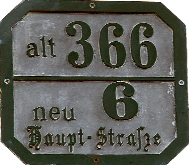 Tadten House Number
Translation List: I'm pleased to announce that we added a new house-number translation list, this time for Tadten. Tadten House Number
Translation List: I'm pleased to announce that we added a new house-number translation list, this time for Tadten.
This list comes compliments of former staff member Hannes Graf, who found it in the new edition (2018) of the
Tadten Chronik, which was shared with him by his cousin, Mike Schreyer. The new edition of the Chronik
reverses the sub-title: now "Geschichte und Menschen," whereas the older one (2007) was "Menschen und Geschichte"
[people and stories/history]. Four pages of the Chronik were enlisted to provide a list of houseowners in 1857
Tadten and the corresponding owners in 2006 [given the 2006 date for owners and the 2007 publication date of the first
edition of the Chronik, I presume the list is in both editions]. Since house conscription numbers were used in
1857 and street names and orientation numbers in 2006, the translation between identification systems was also
provided. Hannes noticed that and thought it could be of value to the BB house number translation project... and he was
correct! Thanks Hannes.
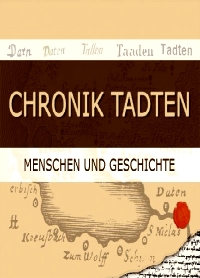 This
list was also interesting in that our Tadten Houselist (based on 1856 land-register data) gives a slightly
different listing of owners, as well as skips three house numbers. In many cases (72 of 145 houses), the owner is exactly
the same. Many others are obvious spelling variations of the same surname (43) or are the same exact surname but a different
given name (22, most are probably spouses or children). Only five houses showed clearly-different owner names, but I'd
assume some of those were son-in-law inheritances. It is not clear why three houses did not appear in the land-register
houselist; one possibility is that the property was deserted or inactive in 1856 and was returned to active use in 1857.
Regardless, we have added text to the 1856 house listing to provide this new data. This
list was also interesting in that our Tadten Houselist (based on 1856 land-register data) gives a slightly
different listing of owners, as well as skips three house numbers. In many cases (72 of 145 houses), the owner is exactly
the same. Many others are obvious spelling variations of the same surname (43) or are the same exact surname but a different
given name (22, most are probably spouses or children). Only five houses showed clearly-different owner names, but I'd
assume some of those were son-in-law inheritances. It is not clear why three houses did not appear in the land-register
houselist; one possibility is that the property was deserted or inactive in 1856 and was returned to active use in 1857.
Regardless, we have added text to the 1856 house listing to provide this new data.
If interested in the new edition of the Tadten Chronik, it was available last year via the Tadten Gemeindeamt
(municipal office) for 30 ; I don't know if it has sold out yet but the e-mail address is
post@tadten.bgld.gv.at.

 A Number for
Thought: I ran across a number that forced me to think hard for a change, so I also thought I'd share that pain
with you! A Number for
Thought: I ran across a number that forced me to think hard for a change, so I also thought I'd share that pain
with you!
In particular, that number is 33. If you go back just 33 generations, one can say with certainty that
you share absolutely no DNA with at least one of your ancestors.
Why? Because, under the assumption of two parents, four grandparents, eight great-grandparents, sixteen
great-great-grandparents, etc., the number of ancestors you would have in that 33rd generation (233
= 8,589,934,592 ≈ 8.6 billion) would be greater than the number of base-pairs in the human
genome (~6.4 billion). Since you only get half of each parents' DNA in each generation, and you must get a
whole number of base-pairs from each, some (in fact, a few billion) ancestors from that 33rd generation have to be left
out!
Did you note that I gave myself a weasel-word escape in the above paragraph? I did, and I absolutely lied
about certainty in the paragraph before that! That weasel-word was assumption. For example, I know that my
Steichen great-great-grandparents were first cousins once-removed, so they shared a fair amount of DNA... and, from a DNA
perspective, they do not count as two independent, full gr-gr-grands... and they also cause all generational
"DNA" counts before them to be smaller. I'm sure also that I have many other distantly-related ancestors, so that
33 generations is not really a hard number... it could be more!
On the other hand, I also fudged when I said "you only get half of an ancestor's DNA in each generation."
...that is not quite accurate (you get at most half). It is true that your ancestor in a given
generation received half of his/her DNA from each parent ...but genetic recombination in the immediately subsequent
generation does not ensure that a grandchild receives a quarter of his/her DNA from each grandparent.
In fact, the amount can be highly variable, which means that the grandchild may get far less than a quarter from a
particular grandparent (say the paternal grandmother), while getting much more from another grandparent (but still,
at most half). As a result, it may not take a lot of generations before none of that paternal grandmother's
ancestral DNA remains in the mix to be passed down further. Thus the number could be far less than 33!
Of course, complicating all this is the fact that our best estimates of the maximum total number of living people 33
generations ago was only about half a billion, nowhere near the ~8.6 billion ancestors calculated for just one
descendant today. Which pretty much says each of us has to have a lot of ancestors who were related to each other.
Is your head hurting? ...mine is.
Here is another thought for you, but one that should not make your head hurt so much...
An autosomal DNA test (the kind most of us buy from AncestryDNA, FamilyTreeDNA, 23andMe, etc.)
looks at slightly more than 700,000 base pairs, or just over one one-hundredth of one percent of our total DNA.
Why so little? you might ask.
The answer is multifold: First, most DNA is identical among all humans (early estimates said ~99.9% was
identical, though that percentage has dropped with more investigation to about 98.5%). Clearly, looking at the identical
parts can't tell us who we are comparatively closely related to (as it would say we are related to
everyone). Second, it is expensive to evaluate DNA... would you pay 10 to a 1000 times more to look at all
the non-identical DNA? I would not. Third, that remaining non-identical DNA is what makes us biologically different
from each other, including the health differences that we really do not want to share with the world. Thus autosomal tests
largely evaluate "junk" DNADNA that does not encode genes. After all, a
mutation in "junk" will not kill off its bearer (whereas one in a gene is more likely to be fatal and not be passed down
further). Since differences in junk DNA are (usually) not fatal, those differences have sustained over many generations,
which makes them quite useful for tracking family lines! I'm sure there are other reasons but I'll stop here.
Now let me return to my previous "number" argument... since autosomal tests look at only ~700,000 base pairs,
how many generations back must we go before we are sure our test results do not include a base pair
from at least one ancestor in that generation? Again, under the assumptions that none of your ancestors were related to each
other and that you received an absolutely equal share from each ancestor in each generation (two assumptions that are most
certainly false ...but work in opposite directions) we arrive at a calculated 21 generations. That is likely a larger
number than you expected... but it is also a meaningless number, as an autosomal test has no capability of
accurately predicting relatives that far back!
PS: I used the term "junk" when referring to DNA that does not encode genes. That usage is fine, as far as it
goes, however further study has found that not all of the non-encoding regions are truly junk (i.e.,
have no current biological function); some non-encoding regions have been shown to have important functions, though current
best estimates still suggest that at least 75% of it remains pure junk... still, we must wait to see what future
research discovers to know for sure.
PS2: After I finished writing this tidbit, a decision was made to include in this newsletter a DNA-related
article by Richard Potetz. Some of the data reported in it relates to the reasonableness of the underlying ideas in this
"number" tidbit. I suggest you reassess these thoughts after you read Richard's article!

Lehigh Valley / East Coast Burgenland Bunch (report by Vanessa Sandhu):
The first meeting of the Lehigh Valley / East Coast Burgenland Bunch was held November 23rd at the Coplay
Sängerbund. We had 24 members in attendance. While we are very fortunate to have phenomenal organizations like the
Coplay Sängerbund in the Lehigh Valley, we have also lost our share of Burgenland ethnic organizations over the past few
years. The Sängerbund is dedicated to keeping Burgenland culture alive through the many wonderful events it hosts
throughout the year. Its heritage committee, headed by Frank Luizer, and its president, Kevin Fritz, were both
instrumental in helping us realize our dream of starting a BB group here. We are extremely grateful for all of their help!
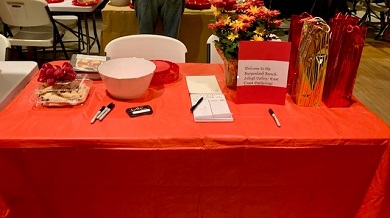
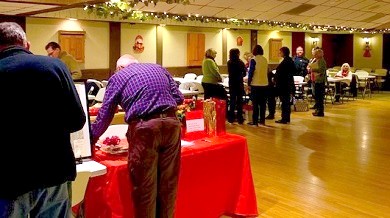 Bob Strauch and I led
the meeting, starting with the reading of a welcome address sent in by BB President Tom Steichen and then moving on
to introductions. Each member shared their surnames and villages, which led to some nice discussions. We also discussed
topics that wed like to explore at the spring meeting.
I made a poster presentation detailing and memorializing the lives of my ill-fated ancestors, the Pammer brothers from
Inzenhof. Two of the three Pammer brothers were killed in accidents at the local cement mills.
We had some nice decorations and an antique Burgenland map and several Burgenland-themed
books on display. Our members shared lots of photos and documents with the group. It was wonderful to hear Hianzisch
being spoken again! Plus we had some great door prizes: Burgenland wine and kiffles! It could have gone on for several more
hours, as there was a lot of great information being exchanged and many new friendships made. All in all, it was a wonderful
afternoon.
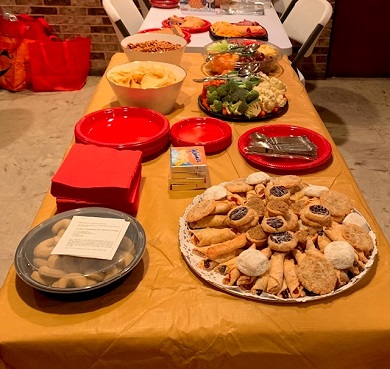

We are looking forward to planning our spring meeting. We hope to see you there!

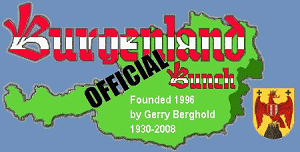 The
Facebook Bunch (from Vanessa Sandhu): The
Facebook Bunch (from Vanessa Sandhu):
Greetings Burgenland Bunch!
We had a busy month on the Facebook page! We welcomed 38 new members this month, bringing our membership total to
1,139! If you havent joined us yet, please consider doing so. Wed love to have you! We have lots of nice discussions and
many helpful, supportive members. Here is our link:
facebook.com//TheBurgenlandBunchOFFICIAL/
Our most exciting news pertains to the formation of our new Lehigh Valley / East Coast BB group, which was developed
using the BB Facebook page as an organizing tool. On November 23rd, we gathered for the first time; the report on our
first meeting is elsewhere in this newsletter [just above]. Please read it there and feel free to contact me at
HooftyRN@msn.com if you would like to attend the next Lehigh
Valley / East Coast meeting! I will add you to the email list!
Member Fred Knarr shared a great video of Martha Tukovits speaking in the Hianzen dialect. It spurred
many great discussions amongst our members. You can view it here:
m.youtube.com/watch?v=FnWdwJ_-M94
Member Annette Diane Kapple shared the latest installment of her Burgenland genealogy blog, this one entitled Filling
out the Picture of Our Kurta Burgenland Immigrants.
annettekapple.blogspot.com//filling-out-picture-of-our-kurta
I wish all of you a wonderful Thanksgiving!
Vanessa

 Update
for book "The Burgenländer Emigration to America": Here is this month's update on purchases of the English issue of
the 3rd edition of Dr. Walter Dujmovits' book "Die Amerika-Wanderung Der Burgenländer." Update
for book "The Burgenländer Emigration to America": Here is this month's update on purchases of the English issue of
the 3rd edition of Dr. Walter Dujmovits' book "Die Amerika-Wanderung Der Burgenländer."
Current total sales are 1456 copies, as interested people purchased 6 more books during this past month.
As always, the book remains available for online purchase at a list price of $7.41
(which is the production charge for the book, as we purposely choose not to make a profit so we can avoid dealing
with the income tax consequences and so you can obtain the book at as low a cost as possible!), plus tax & shipping.
See the BB homepage for a link to the information / ordering page and for information
about current discounts (there is at least one discount on price or shipping available most of the time... if not, wait a
few days and there will be one!).

Burgenland Recipes: Member Cris Roemer, whose family emigrated from the Weichselbaum area
in the Jennersdorf district, provided this recipe. This one originates with a Czech friend, but reminds me of dumplings I
had years ago when visiting family in Schandorf.
 Apple
Dumplings Apple
Dumplings
Ingredients-dough:
1 cup shortening or lard
1 cup cottage or ricotta cheese
1/2 tsp. salt
2 cups flour
Ingredients-filling:
1 jar of chunky applesauce
cinnamon sugar
Preparation:
- Mix the dough ingredients well with a pastry blender, then chill for 1/2 hour.
- Roll out rather thinly on a floured board and use a glass or cookie cutter to cut out circles. Place 1/2 of the circles
onto a cookie sheet and place a teaspoon of applesauce on each; sprinkle with cinnamon sugar.
- Each filled circle will need a plain circle for a lid. Seal with tines of a fork. [Alternatively, if your circles are
large enough, you can fold and seal, as in the picture above.]
Bake at 350 degrees for 20 minutes. When cool, frost with white icing (powdered sugar and water mixture).

 Note:
We have updated the recipes sortable list with links directly to the recipes or food-related
articles published in our past newsletters. You can access the list by clicking our recipe box (to the right). Thanks to the
contributions of our members over the years, we have quite a collection of Burgenland recipes, some with several variations. Note:
We have updated the recipes sortable list with links directly to the recipes or food-related
articles published in our past newsletters. You can access the list by clicking our recipe box (to the right). Thanks to the
contributions of our members over the years, we have quite a collection of Burgenland recipes, some with several variations.
However, we have or will soon use up the few remaining unpublished recipes we have... and when those are gone, this recipe
section will become dormant. Nonetheless, we are always on the lookout for fresh ideas, so, if you have a favorite family
recipe, please consider sharing it with us. We will be happy to publish it. Our older relatives, sadly, aren't with us
forever, so don't allow your favorite ethnic dish to be lost to future generations.
You can send your recipe to BB Recipes Editor,
Alan Varga. Thanks!

Cartoon of the Month:
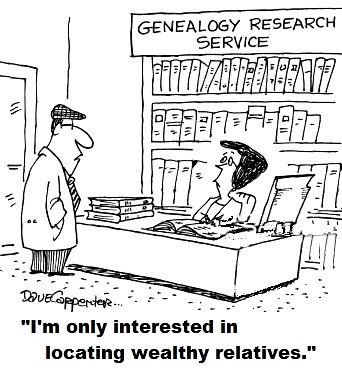
|
2) DONT IGNORE THOSE DNA DISTANT MATCHES (by Richard Potetz)
[Editorial note: Richard was torn whether to write this article, as it suggests making a low-likelihood-of-success
effort. I encouraged him to proceed because he proposes a way to improve the success rate (even if it still remains low) and
he provides practical advice about the problem. In turn, he asked that I freely add my thoughts and suggestions to his
article... which I agreed to do.]
Is it possible to identify a shared ancestor with someone who shares just a little matching DNA? I didnt think so,
but I was wrong. On the Ancestry.com site, a DNA match listed as a 5th to 8th cousin, matching just a
single 7 cM DNA segment, turned out to be my third cousin twice removed. The search method I used may work for you.
[Ed: I too have had occasional success in identifying a predicted 5th to 8th cousin, even twice two that were
actual "distant" cousins (in that 5th to 8th range), however, like Richard, most of these small-matching-DNA predicted
cousins proved to be "removed" rather than "distant."]
Ive had autosomal DNA testing done by both 23andMe and AncestryDNA, copying test results to
FamilyTreeDNA and GEDMatch. Those four sites each provide a very long list of people with whom I share some
matching DNA1337 matches on 23andMe, and more than eleven thousand on AncestryDNA. Only with people near the
top of those lists could we identify a shared ancestor.
Ive written Burgenland Bunch Newsletter articles twice before about my experience with autosomal DNA testing, in
2014 and 2017. Both articles are laughably obsolete now because they reported such limited success. In the 2014 article, I
complained about not finding anyone with whom we could identify a shared ancestor. The 2017 article celebrated
identifying shared ancestors with all of four people. The number of people tested has now grown enough to make
identifying shared ancestors with lots of people the new normal. By 2019, I had identified shared ancestors with dozens
of cousins, every one of them near the top of a DNA matches list. But another approach was needed to find connections with
some of those more distant matches.
Surname searching is the best strategy to deal with DNA distant matches. Ive read articles that tell me to
ignore matches below 10 cM. Ive read many articles that tell me to ignore 7 cM matchesand I doexcept
I also do a search for surnames in my list of matches. Searching my AncestryDNA list of matches for my moms maiden
name, Sucher, found Matt Bier, who matches me in just a single 7 cM segment. That find changed my
understanding of small, single segment DNA matches.
Matt Bier had the Sucher surname in his Ancestry tree, coming from his great-grandmother, Josephine Sucher
(1892-1968). Looking at Matts tree, I was surprised to see his great-grandmother had immigrated to America from Oberdrosen,
Burgenland, the birthplace of my grandfather, Johann Sucher (1862-1938). Matt had not found records outside the US, but a
little research on my part placed his great-grandmothers birth in Oberdrosen house 43. My grandfather was born next door in
Oberdrosen house 42. The Sankt Martin an der Raab parish records connected Matts immigrant great-grandmother to my
great-great-grandparents, Johann Sucher (1775-1837) and his wife Julianna Zieger (1778-1848). Their son, Mathias
(1819-1895), is the grandfather of Matts great-grandmother. Their son, Franz (1817-1896), is my grandfathers father,
making Matt and me third cousins twice removed. Identifying the ancestors I share with Matt Bier verified a branch of
my tree that had not been verified before with DNA, very gratifying for my genealogy hobby.
The meaning of a single small DNA segment match had been hidden from me by those huge lists of matches with strangers, only
a tiny fraction of which seemed connected to me. What should we know about 7 cM matches? Below in italics is
what the Ancestry site told me about my match with Matt Bier, with our actual relationship in
red:
Relationship to Matthew Bier
When two people have a DNA match, it means they inherited DNA from one or more recent common ancestors. The length of DNA
they have in common is estimated in centimorgans (cM). The higher the number, the closer the relationship.
You and Matthew Bier share 7 cM. This table shows the percentage of the time people sharing 7 cM have the following
relationships:
|
Percent |
Relationships |
Percent |
Relationships |
| 33% |
5th cousin
4th cousin 2x removed
Half 4th cousin 1x removed
Half 3rd cousin 3x removed |
12% |
3rd cousin 1x removed
Half 3rd cousin
Half 2nd cousin 2x removed
2nd cousin 3x removed |
| 27% |
4th cousin 1x removed
Half 4th cousin
Half 3rd cousin 2x removed
3rd cousin 3x removed |
5% |
3rd cousin
2nd cousin 2x removed
Half 2nd cousin 1x removed
Half 1st cousin 3x removed |
| 20% |
4th cousin
3rd cousin 2x removed
Half 3rd cousin 1x removed
Half 2nd cousin 3x removed |
<1% |
2nd cousin 1x removed
Half 2nd cousin
1st cousin 3x removed
Half 1st cousin 2x removed |
My match with Matt Bier was a learning experience for me. For a third cousin twice removed, a single 7 cM matching
segment is not unusual. In the table above, the 3rd cousin 2x removed relationship is included with relationships 4th
cousin, Half 3rd cousin 1x removed, and Half 2nd cousin 3x removed, together accounting for 20% of
all 7 cM matches. Third cousins twice removed, in theory, share 13 cM of identical DNA on average. But that is just
the average amount of sharing. Shared amounts vary because of the random nature of DNA inheritance. For third cousins
twice removed, AncestryDNA shows the expected range of matching to be from zero cM to 135 cM. That zero
cM matching result happens more often than you might expect: 30% of the time third cousins twice removed share
no detectable DNA relationship.
GEDmatch does not even include Matt Bier in my list of matches, which bottoms out at 9.2 cM of matching DNA. That
match list, called a One-to-Many list by GEDmatch, shows just your top 3000 matches. A GEDmatch One-to-One
compare does show Matt and I share an identical DNA segment: 7.5 cM on chromosome 19.
[Ed: I'll comment here on a number of things from the above paragraphs...
For those of you who have done serious "paper" genealogy research (research based on vital event records and shared family
trees), you likely recognize that it is comparatively easy to document recent, but no longer living, ancestors via church
and government records. Further, with some effort and luck, you can take those ancestral lines back a number of additional
generations. However, when it comes to families of living cousins, those same paper resources are protected by privacy
laws and are not accessible. Therefore you must depend on direct contact with cousins and their willingness to share
family tree information about their descendants or relatives. My experience is that, the more "distant" the cousin, the
less likelihood they will share, and "distance" also includes distance by being "removed." We who ask for information
quickly become that creepy-weird old guy or lady, whose relationship to the person being questioned is not well understood
by that person, and who seems to know too much already yet is asking for even more information! Even if you get a
response, the quality and detail are generally poor. Thus our paper trees get artificially "trimmed" along the bottom
because data cannot be obtained.
In contrast, the great majority of recent customers of DNA-testing companies are comparatively young (as most of us
interested-in-genealogy old fogies tested years ago). These new customers tend to fall in the generations where our tree
data is poor or nonexistent. However, if they have a recognizable surname (one in your family tree), you have a good
chance of identifying them, especially if they provide a link to their family tree, because the tree will give you the
chance to recognize some of their ancestors. This approach has proved especially effective for me on AncestryDNA, as it
recently provided all customers the ability to access a 5-generation "teaser" tree for each predicted cousin (assuming the
cousin has a tree and allowed such linking; my experience is that the majority with trees do allow linking). This "teaser"
tree is available even when you, yourself, do not have a full Ancestry account or a tree on Ancestry. I, myself, do not
have a full Ancestry account nor a tree on Ancestry, whereas Richard has both. As he notes, if you do have an account, you
can have Ancestry do the search for matching surnames and you can examine their full tree. In my case, without an full
account, I can only see the teaser trees... but even that has proved quite successful.
In an article some months ago (Newsletter297#04),
I noted that AncestryDNA has a conservative tendency; that is, they under-predict the closeness of a relationship,
especially when it comes to "removed" relatives. The numbers in Richard's table above show that many
fairly-close-but-removed true relationships can yield just 7 cM of shared data, yet AncestryDNA will predict them all as
being in that 5th to 8th cousinship level. If, in fact, the true relationship is a 1st-cousin thrice-removed or a
2nd-cousin twice-removed or even a 3rd-cousin once-removed, you likely have enough family data to recognize their
ancestors. Richard argues below that you should look at a predicted cousin when there is a recognized surname in their
tree, even if the shared DNA amount is small; I agree... but back to Richard's words...]
What should you do with distant DNA matches?
I suggest ignoring them unless the surname of one of your direct ancestors is in your matchs surname list.
Ive got thousands of 7 cM matches on AncestryDNAtoo many to deal with except by
surname searching. Try searching for the surnames of all 16 of your great-great-grandparents. That search is easy. The
surname search feature is in your DNA Matches list (which is called DNA Relatives by 23andMe and
Family Finder Matches by FamilyTreeDNA). The surname search feature is a bit different between the DNA testing
services Ive used. In AncestryDNA, the search feature checks for matching surnames inside the entire ancestry
tree of your matches. In 23andMe and FamilyTreeDNA, only the list of surnames provided by your matches
is searched. Even if you have your tree on the FamilyTreeDNA site, the surnames in that tree are not searched, just
the surnames you provide in the Genealogy section of your Account Settings. If you have been tested through
23andMe or FamilyTreeDNA, please include in your list of surnames as many direct ancestors surnames as you know.
All 16 surnames of your great-great-grandparents would be best, but if you dont know all of them, just list those you know.
Just half of my Family Finder matches list any surnames, making this excellent feature less helpful than it
could be.
The top of my list of FamilyTreeDNA Family Finder matches is shown below. The far right column lists a few of the Ancestral
Surnames provided by my matches, along with the surnames location. For space reasons, not all of your matches
Ancestral Surnames are shown in that Family Finder list. A surname that matches one of your listed
Ancestral Surnames is shown in bold typea helpful featurebut
a surname search is still needed to find any matching surnames not shown. Flurina Zeier, the third person on my list, and I
found we were third cousins once removed, connected though the Zotter branches of our trees. Note that the
Zotter surname we share is in bold type, showing that we both list Zotter as an Ancestral Surname.
Burgenland Bunch member Debbie Ann Hooper is the fourth match on my list. We both have ancestors who lived in Oberdrosen
but we have yet to identify a shared ancestor.

Having written this article touting the value of distant matches, I have to confess my only complete success with them and
the surname search technique is the one I wrote about. Surname searching finds many near-miss situations, such as the
one I have with Burgenland Bunch member Arran Townson, with whom I match a single 11 cM segment. The surname search
technique showed we share the Forjan surname in our trees, but we cant identify our shared ancestor. Our Forjan
ancestors lived in adjacent villages. His lived in Kristyán (Grieselstein), mine in Gyanafalva (Jennersdorf)in
the same parish but different villages. All we can say from our research is that we are more-distantly related than fourth
cousins. We cant complain about being misled; AncestryDNA estimates Arran and me to be 5th to 8th cousins. Arran and
I will probably identify our shared ancestor when the pre-1828 Burgenland Catholic Church records go online.
[Ed: My results with this type of predicted-cousin estimation is a bit more successful than Richard
experienced, mostly, I assume, because I have developed a huge "paper" tree over my 20+ years of family research. To give
you some idea, I'll speak a little about my results obtained on AncestryDNA using only the teaser trees as a help. I have
13,386 matches, with all but 460 being in the predicted "Distant, 5th-8th" category. Since I originally failed to note
that the tree-search tool was available to those without a full Ancestry account, I manually searched the teaser trees for
matches. Given that, I put little effort into the "Distant" category, digging further only when I happened to note that a
match's surname was one I immediately recognized, thus I had not systematically looked at that full category. One casual
look in that category caused me to find a cousin... one that is actually a 3C1R (third cousin once removed), so is
consistent with AncestryDNA's conservative predictions (predictions are more distant than reality).
I had, however, manually but systematically looked at the 460 matches in remaining categories. Of the 402 matches in the
"4th-6th" predicted cousin category, I have identified 28, almost exclusively through identifying an ancestor in their
teaser tree that is also in my tree. Of those, 18 are of the "removed" type, making them a little harder to identify...
but I did anyway. Of the final 58 (in the 3rd cousin or closer categories), I've identified 38, with the remaining
unidentified being 2 in the "2nd-3rd" category and 18 in the "3rd-4th" category; they remain unidentified because they
provide no teaser tree and/or use an alias as their personal name. Overall, of the 67 matches that I have identified among
these 460, 41 are of the "removed" type... but name matching in their trees still let me identify them.
A later email discussion with Richard caused me to question whether the automated tree search was truly unavailable
to me. Checking again, I realized it was available. In a one-hour test session, I added 9 verified cousins found in
the "Distant" category by auto-searching (separately) for each of three surnames found in my immediate family tree. The
cousins found ranged from a 2C1R (who shared only 9 cM) to a 7C2R (10 cM shared). The lowest shared DNA with a predicted
cousin for whom I could verify the relationship in this exercise was 6 cM, and she proved to be 3C1R. If you recall the
AncestryDNA table that Richard presented above, it says that 12% of relationships sharing 7 cM are in a category that
includes 3C1Rs... mine happened to share just 6 cM (the amount needed to actual predict someone as a 3C1R is 40-75
cM, so you can see why she ended up in the "Distant" category (~20cM or less). I will note that I picked three fairly rare
surnames for this exercise; had I picked a common surname, the effort to find verified matches would have been much
greater.]
If your reason for taking an autosomal DNA test is to verify your paper tree, distant matches should not be ignored.
Identifying a shared ancestor with a distant DNA match will likely verify a big part of your tree.
|
3) TIPS FOR FAMILY RESEARCHERS IN AUSTRIA
Given the pending online access to the Eisenstadt Catholic records, I was searching online to see if I could find more
information about their availability. While I did find a few new sources, they only repeated information found elsewhere.
However, I also stumbled on a somewhat old (2012), German-language, 93-page pdf document published by the Association of
Austrian Diocesan Archives. The full citation and its web link are shown below:
TIPPS FÜR FAMILIEN-FORSCHER IN ÖSTERREICH
Publication Series of the Association of Austrian Diocesan Archives
Edited by Kerstin Hederer and Robert Kluger
Online Edition, 3rd revised. Edition 2012; 93 pages.
Š 2012 Diocesan Archives of Austria
http://dioezesefiles.x4content.com/page-downloads/tipps_fuer_familienforscher_2012.pdf
As you can see, I have taken the English translation of the booklet title as my article title. Below, I will provide
translations or summaries of selected sections, plus I will provide a translation of the Table of Contents, so you
can see what the remainder of the booklet covers.
The booklet begins with a "preliminary note" wherein the editors give a short background on why the booklet was developed.
The note acknowledges "...the large number of family researchers who visit the church archives of Austria every year to
search for their ancestors in the baptismal, marriage and death books kept there." It goes on to (slightly) decry "...the
conceptless collection of names and dates," implying that a much more worthwhile goal is to "...expand to more
extensive insights into the social, economic, home and population history of entire places or regions." The further
implied suggestion is that this booklet will help you do this, what I've labeled, "more worthwhile" goal. Given the nature
and intent of the Burgenland Bunch (genealogy and history), I would never say trying to develop "more
extensive insights" was wrong, but I'd also not decry the "collection of names and dates," as I believe doing so
is essential to define the region(s) and era(s) about which you may wish to develop those "more extensive insights."
The note concludes by correctly acknowledging the role of the church and its pastors in making these records available.
We then find the Table of Contents:
| I. Introduction to Genealogy |
5 |
| II. The Matrices System in Austria |
10 |
| III. The Function of Archives |
16 |
| IV. How Do I Go About Family Research? |
19 |
| V. Tips for Family Research in the Austrian Dioceses |
|
| |
Diocese of Eisenstadt |
27 |
| |
Diocese of Feldkirch |
31 |
| |
Diocese of Graz-Seckau |
35 |
| |
Diocese of Gurk |
41 |
| |
Diocese of Innsbruck |
47 |
| |
Diocese of Linz |
52 |
| |
Archdiocese of Salzburg |
57 |
| |
Diocese of St. Pölte |
64 |
| |
Archdiocese of Vienna |
69 |
| VI. Working Aids and Reference Works |
|
| |
1. Handbooks on Archive Organization |
76 |
| |
2. Handbooks about Genealogy |
76 |
| |
3. Tools and Dictionaries |
77 |
| |
4. Genealogy Online |
80 |
| Attachments: |
|
| |
Examples of Church Book Entries |
82 |
| |
The Most Important Latin Terms and Abbreviations |
84 |
| |
Example Letters for Writing Interpretation |
87 |
| |
Form for Creating a Pedigree |
92 |

Now I will give you a translation of the section dedicated to the Eisenstadt Diocese (pp 23-30:
DIOCESE EISENSTADT
Repository of the Matriken Books:
Most are deposited in the diocesan archives, the rest are in the parishes. No system for deposit in the central archive but,
as a rule, the endangered stocks were collected.
A list of matrices, indicating the size and location, is in progress and will be published soon on the Internet. [Ed: I
have not found this!]
In the monastery archives at Heiligenkreuz, the registers of the incorporated parishes are:
- Mönchhof (baptism, marriage and death records 1683-1711, registers from 1712 in the parish Mönchhof); and
- Kaisersteinbruch (baptism books 1690-1869, marriage books 1690-1753, death
books 1805-1826).
- Podersdorf am See, the entire
matriculation of the parish is located in the local parish.
Filming of the Matrices:
In individual parishes, the books were filmed for conservation reasons, the books in question are no longer submitted in the
original.
Other Duplicates:
Register copies from 1922 are in the Diocesan Archives (since the establishment of the Apostolic Administration of
Burgenland), older ones in the responsible Hungarian county archives.
How Far do the Matrices Go?
The oldest matriculation book of the Diocese of Eisenstadt comes from the cathedral and city parish Eisenstadt and
contains entries from 1614.
User Regulations:
A permit by the Episcopal Ordinariate is required for the inspection of parish records in the parishes, which must be
applied for in writing (via the Diocesan Archives). The use of the books in the diocesan archives is possible within
the open hours of the diocesan archives; Here, the approval takes place with the completion of a user sheet.
Special Matrices:
Christening matrices (from 1947) of the Hospital of the Brothers of Charity Eisenstadt.
Matrices of Other Denominations:
Evangelische Matrikenführung: The registers of the A. B. and H. B. protestant parishes are located in the respective
parishes.
Israelitische Matrikenführung: The surviving matrices of the Jewish communities are located in the "Jewish Central
Archive of the Former Jewish Communities of Burgenland" in the Burgenland State Archives, Europaplatz 1, 7000
Eisenstadt.
Directory at Hugo GOLD: Memorial Book of the Lost Jewish Communities of Burgenland (Tel Aviv 1970, pp.
137-144).
Diocesan Boundaries and Scope:
The diocesan borders coincide with the state borders of the province of Burgenland. The diocese has 12 deaneries and
172 parishes.
Particularities:
Pastoral care of the places:
- Bruckneudorf (parish Parndorf) by the parish Bruck a. d. L. (Archdiocese of Vienna);
- Sinnersdorf (diocese Graz-Seckau) by the city parish Pinkafeld;
- Burgauberg (parish Stegersbach) through the parish of Burgau (Diocese of Graz-Seckau);
- Hackerberg (parish Stinatz) through the parish Neudau (diocese Graz-Seckau,
with the exception of Croatian-speaking believers);
- Neudauberg (parish Stinatz) through the parish Neudau (diocese Graz-Seckau).
The matriculation takes place in the supervising parishes (except Sinnersdorf: own matrices, but the matriarchal
guidance takes place in Pinkafeld).
In the area of the parish Kaisersteinbruch, a training area was established in 1941 and, in the course of which, the
local inhabitants were relocated (reestablished as an independent local chaplaincy in 1951). The matrices are located in
Stift Heiligenkreuz.
When the Apostolic Administration of Burgenland was established, parishes were divided by demarcating Hungary.
Several Austrian towns today have their matriculation before 1922 in Hungarian parishes.
The diocesan archives provide information about their predecessors.
Genealogical Associations:
There are currently no genealogical associations in Burgenland.
Other Institutions:
Burgenländisches Landesarchiv and Landesbibliothek
Europaplatz 1
7000 Eisenstadt
Tel .: 0043 (0) 57-600 / 2358
E-mail: post.archiv@bgld.gv.at
Homepage: www.burgenland.at/kultur/landesarchiv
(Hours: Monday-Thursday 8.00-16.00, Friday 8.00-13.00)
Esterházy Archive
Forchtenstein Castle
Tel .: 0043 (0) 2682 / 63004-24
Fax: 0043 (0) 2682 / 63004-66
E-Mail: kultur@esterhazy.at
Homepage: http://esterhazy.at/de/sammlungen
(Open from May to December, only Thursday, 8:00 to 12:00 am, written request for research permission and telephone advance
notification required!)
Important Archives in Neighboring Countries:
In Hungary, all the matrices are in the parish offices. Duplicates and films are available in the county archives.
Literature:
RITTSTEUER, Josef: Church in the border area (Eisenstadt 1968).
HOMMA, Josef Karl (arr.): The pastoral ministries of the Apostolic Administrative Burgenland (= Austria Sacra 1. II. 5)
(Vienna 1960).
List of Burgenland place names in German, Hungarian, Croatian and Roman languages, compiled and translated by Johann SEEDOCH
(= Burgenländische Heimatblätter, Supplement, 2001/4) (Eisenstadt 2001).
Citation of the Parish Matrices:
DAE (= Archdiocese Eisenstadt), Pfarrarchiv Oggau, Matrikenbuch Tom. I (if all three matrices fall into one volume)
or Baptismal Book I, Fol. (or Pag., P.) 18. The storage location (DAE) is omitted in the case of matrices still in
the parishes.

The section titled "I. Introduction to Genealogy" (pp 5-9) in the table of contents is a rather standard
introduction with little information specific to Austria or Burgenland... I'll skip it. If you want to read it, please see
the pdf link (GoogleTranslate will do a mostly adequate job of converting the German text to English; just copy and
paste).

However, the section titled "II. The Matriken System in Austria" (pp 10-15) provides a fair amount of
historical context about the keeping of vital event registers by the church and state. For this reason, I'll give you a
translation:
What are matrices?
The parish registers, in which the pastor registers the baptisms, marriages and deaths that occur in his parish, are called
"(parish) Matriken" in Austria. In Germany these books are called "Matrikel", in Switzerland "Rodeln". The word derives from
the Latin term matricula (= public directory) and is related to matrix (= ancestry, mother).
Almost all religious communities in the world keep records of their members and the performance of religious acts. In 1563,
the Council of Trent ("Tametsi" decree) made the compulsory registration of marriages mandatory in the Catholic
Church. The main purpose of this was to prevent the conclusion of secret marriages. By entering the names of the bridal
couple, the witnesses, the wedding place and date, this marriage could no longer be denied and a later, second marriage
prevented. Also, guidance requiring baptismal and confirmation books was confirmed.
By a further regulation in the "Rituale Romanum" from the year 1614, an obligation for the implementation of death,
confirmation and family books took place, and precise regulations about the form of the church book entries were issued. At
the regional level, a series of provincial synods soon regulated the implementation of these orders.
In addition to the baptismal, marriage and death books, the confirmation books, sponsalien- (i.e., betrothal-), communicant
and family books as well as the "soul status" register or "status animarum" (= directories of confession and communion,
often applied to households for clarity) became included in the parish registers, which can also provide the family
researchers with a wealth of information.
As in other regions of the German-speaking world, the beginnings of the matriculation can already be detected in Austria in
the second half of the 16th century. The oldest matrices in the Austrian dioceses are those of St. Stephen in Vienna (1523),
Matrei in East Tyrol (1558), Grieskirchen in Upper Austria (1568), Klagenfurt-St. Egid in Carinthia (1571), the Salzburg
Dompfarre (1575), Wilhelmsburg in Lower Austria (1579), the parish house in Styria (1586), Lingenau in Vorarlberg (1594) and
the cathedral and city parish Eisenstadt (1614). Nationwide, however, the matriarchal guidance in the Austrian lands does
not begin until the beginning of the 17th century. For the family researcher, this means that his ancestors can be traced
back to the church books, in the best case, only until this time. For the time before, other older sources (e.g., documents,
manorial directories) may be used.
What are "Alte Matriken", "Altmatriken", "Kirchliche Matriken"?
The oldest matriarchal books, also known as "Alte Matriken" = "Ancient Matrices" in legal terminology, were
kept by the Catholic Church as purely confessional books; i.e., they were created to record the sacraments for baptisms,
marriages and deaths in a parish.
They were followed by the so-called "Altmatriken" = "Old Matrices". Altmatriken refers to those
church books that were created in Austria in the period from 20 February 1784 to 31 December 1938 (marriage books until 31
July 1938). These books, too, primarily document the administration of the sacraments. In addition, however, by an imperial
patent in 1784, the Catholic clergymen were officially obliged by the state to hold baptism, marriage and death records,
whereby the state provided the formal guidelines and had supervision over them. From now on entries had to be made basically
in German (before mostly Latin) and from now on there were for the first time church books with preprinted rubrics.
Exceptions are Salzburg and Burgenland. In Salzburg, which finally became Austrian after the decision of the Vienna
Congress, the Altematriken did not begin until May 1, 1819; in Burgenland, which belonged to Hungary until 1918, the
Altematriken ends as early as September 30, 1895, when the registry offices were in Hungary were introduced.
State registry offices were introduced in Austria after the "Anschluss" to the German Reich in 1938 (such as began in
Germany in 1875). As a result, the church matrices lost their state character as official civil status records and, since
then, are again purely church directories (they have since been referred to as Kirchliche Matriken = "church /
ecclesiastical records").
From the end of the 18th century on, all other legally recognized religious communities (Protestants, Orthodox, Jews, Old
Catholics, Muslims, etc.) gradually became empowered to administer their own Matrices.
Protestant Matriken Beginnings
The "Tolerance Patent" of October 13, 1781, issued by Emperor Joseph II, allowed the Austrian Protestants of the Augsburg
and Helvetic confessions to exercise their religious freedom. The court decree of February 22, 1782, allowed pastors to keep
baptismal, marriage, and death books. However, these were considered private notes and did not have the probative value of
public documents. All matriculation data still had to be reported to the competent Catholic pastor, who noted them in the
Catholic church records.
By resolution of November 20, 1829, the Protestant pastors were given the authority or requirement to run their own records
whose probative value was equivalent to that of the Catholic. However, duplicates had to be created for the baptisms,
marriages and funerals that had occurred and these were to be forwarded to the competent Catholic pastor, who continued to
register the evangelical cases in his books. In addition, the Protestant pastor was allowed to issue baptismal, marriage and
death certificates, which, however, only became legally valid after confirmation by the Catholic pastor.
Only on 30 January 1849 (RGBl 107/1849) was there complete legal equality between the matriculation of Catholics and
Protestants. From then on, Protestants are no longer registered in the Catholic books. Only where the distance to the
responsible Protestant parish communities was too large, can their matriculation cases be found in the Catholic parish
registers until 1938.
The 1829 obligatory regulation, to keep evangelical records in two identical originals, remained mandatory. The duplicates
were sent to the leadership of the Evangelical Church, namely the k. k. Consistory A. B. and H. B.; since 1861, to
the Protestant Oberkirchenrat.
Jewish Matriken
Within the Jewish population of Europe, the requirement for established family names began late and then often under state
pressure. In Austria, for example, naming laws were enacted in 1787 and 1789. The Basic Law of 1867 abolished the last legal
restrictions on matriarchy applicable to Jews. For information about the Israelite matrices today, the five existing
religious communities in Austria (in Vienna, Graz, Linz, Salzburg and Innsbruck) are responsible.
What happened to non-religious people?
For non-religious people, the law of May 25, 1868 was the first to have the registers kept by state organs. The district
administrative authorities had to maintain marriage banns book and a marriage registry for the marriages they performed
(emergency civil rights). In 1869, this form of marriage was also made possible for marriages between members of various
Christian denominations. The Matriculation Act of 8 April 1870 also obliged the political authorities of the first instance
(district headquarters or municipal council) to record the birth and deaths of the non-religious or of the religious
communities not recognized by the state.
Special register books
In addition to the regular matrices, special ministries were run in different places and for specific situations. These
include, for example, the matrimonial books at individual hospitals. When the first large hospitals were erected around
1900, they were taken out of the parish in which they lay and, because of the large number of births and deaths, they had
their own matrices.
Also for military persons, there were separate matrices since 1786, because these were not affiliated with a parish. They
were led by the competent military chaplain; only in small garrisons was this task performed by a local pastor. Most of the
matrices are now in the Austrian State Archives (Kriegsarchiv department, Nottendorfergasse 2, 1030 Vienna).
Since 1 January 1960, the Military Ordinarium in Vienna (Mariahilferstraße 24, 1070 Vienna) has been running a
central military matrices for the whole of Austria, and some Wehrmacht matrices are also kept there.
For civilian cases (vital events) that occurred on Austrian commercial or warships, also exist their own directories.
Who kept the matrices?
In principle, the matriculation before 1939 was always the responsibility of the clergy. However, in parts of Austria at the
time of the Napoleonic Wars, there was a phase in which the state took on this task. From 1809 to 1813, the Villach district
(Upper Carinthia and East Tyrol) was, as part of the Kingdom of Illyria, French territory. Since the French Revolution,
marriage was a purely private contract in France (1791 was the introduction of the so-called civil marriage) and the
recording of the civil status fell within the remit of the community; in those years, the pastors were forced to hand over
the parish registers to the mayors ("Maire"). Often, however, the matriculation task was still left to the pastor, although
some church books were also lost.
What information do the matrices contain?
Baptismal and wedding books contain records of the religious activities performed on members of a religious community. They
do not record the birth, rather the baptism. Death records and burial places are recorded in the death-books (with death the
deceased emerges from the sacramental order of grace, so he can no longer receive any sacraments). The change of place of
residence or other events, which have nothing to do with the church and in which the pastor is not involved, are not noted
at all. It was not until the 20th century that the stipulation of the Decree "Ne temere" (1907/08) made it customary to
inform the respective pastoral office of the marriage or the death of a person elsewhere. Within the birth registrations,
there are no indications of later life; in the registration of marriages, only limited information about the place of origin
of the bridal couple or the number of later common children and, in the death records, usually no indication of the place of
birth.

The final two initial sections, "III. The Function of Archives" (pp 16-18) and "IV. How do I go about
family research?" (pp 19-26), are rather bland and elementary; again I'll skip these sections, as well as all the
sub-sections concerning diocese other than Eisenstadt (presented above) that appear in "V. Tips for Family
Research in the Austrian Dioceses."
Section "VI. Working Aids and Reference Works" is just what it claims, a list of genealogical research tools
and references; being they are mostly German-language, I'll refrain from saying more about them.
The "Attachments" are either visual tools or translations of church-Latin terms to German (similar
resources for Latin to English are available elsewhere), thus I see little reason to reprint those here. I recommend
consulting the pdf file if you have interest in these items.
However, one small section in the attachments covers a topic I've never presented in the BB newsletter: the symbols
European genealogists often use as a shortcut when writing down vital events. Here are the symbols with the associated
text translated to English.
Genealogical Signs:
* = born
(*) = born out of wedlock
= baptized
= died
* = stillbirth
= extinct
oo = married
o-o = illegitimate connection
o = engaged
o|o = divorced
X = fallen
[] = buried
|
4) ACCESSING ORIGINAL RECORDS REFERENCED IN MARGINAL ENTRIES
At the end of the recent series concerning marginal entries found in Hungarian "long-form" vital records, I
mentioned that such marginal entries usually document vital events that took place in the industrial cities near Burgenland,
with the Vienna metro area being foremost among the regions involved. Those vital events are "returned" to Burgenland
because they involve persons or family that have legal standing or "belonging" in a town in a local
recording district. Such returns are also called delayed birth/marriage/death certificates, as they often do
not appear in the local records for some years (as the bureaucratic machinery takes significant time to work through this
transfer process).
While some of these returns contain all the information found in the original record filed in the recording
location where the event occurred, there are still a significant number of returns that fail to do so. Also, many of the
original records are in German, which may be an easier language for some of you to read (though they are also more likely to
be written in that difficult-to-read German Kurrent Handschrift). Nonetheless, they give you a second
opportunity to read or confirm what the vital record says, should you struggle with the Hungarian text of the return. For
both reasons (additional information / confirmation), accessing the original record may be useful.
Fortunately, images of the original church-based vital records for Vienna and other areas in Austria
(especially Catholic records) are available online and are not difficult to access. Given that, I recommend that you
make the effort to access the related original record that backs up each marginal entry that involves
your family.
So how do you do this?

The first step, of course, is to identify either the original recording location
mentioned as the source of the information in the marginal entry or the address where the vital event occurred.
Better yet, identify both the recording location and the event location, as there are plenty of similarly-named
locations in Austria, and having both locations can be quite helpful in sorting out these kind of problems (however, not all
returns identify both places). Further, any "extra" information will come in handy when confirming you found the right
original record. In addition, you'll need to know when the event occurred. In the series about marginal records, I
point out where both locations are documented as well as the date of the event.
In our example marginal marriage entry, the recording location was "A simmeringi plébániai hivatal"
= "the parish office of Simmering" and the marriage location was "a simmeringi plébániai templomban" = "the
parish church of Simmering." While this text does not indicate what type of parish this is, the fact that both
bride and groom are listed as Roman Catholic indicates the denomination of the parish.
We also saw that the marriage certificate was "által 1901 évi február hó 28-án" = "issued on 28th February 1901"
and that the marriage was performed "1901 évi január ho 7 napján" = "on 7 January 1901."
For our example marginal death entry, the death certificate was issued by "A bécsi nussdorfi
szent-Thomásról nevezett római katolikus plébaniai hivatal" = "the Roman Catholic parish office of Saint-Thomas of
Vienna, Nussdorf" and the death occurred "Bécsben XIX kerület Greinergasse 46 szám" = "In Vienna's 19th
district, Greinergasse number 46."
No date was given for the issuance of the death certificate, rather only that the death occurred "alatt 1904 évi
szeptember 29 napján" = "during the 29th day of September, 1904."
For our first example marginal birth entry, no information was given about the original recording
location; rather only the place and date of birth were provided: "A születés helye: Zilingdorf" = "Place of birth:
Zilingdorf" and "ideje: 1896 évi junius hó 1 napja" = "date: year 1896 month June 1 day." Again, no
religious denomination is given in this text but the parents and child were listed as Roman Catholic so we know we will be
looking for a Catholic parish.
In our second example marginal birth entry, it is reported that the birth certificate was
"A semmeringi római katholikus plébánia hivatal által, 1896 évi december hó 21 napján" = "issued by the Roman
Catholic Parish Office in Simmering on December 21, 1896."
Further, that the birth of child Rudolf occurred "Simmeringben Felső-utcza 6 szám, alatt 1896 évi oktober hó 15 napján,
Rudolf nevű törvényes fiú gyermek született" = "at Simmering, Oberstrasse 6, on October 15th, 1896..."
Thus, you should see that the extent of the location and date information varies among the examples I provided (and it
follows that you should assume the possibility of similar variation among your own marginal entries). Obviously, once you
know where to look, you also need to know who and what you are looking for, so record everything provided that might be
potentially useful before beginning your search for the original record.

Before I move on to that search, I want to point out a number of things about the above locations and dates...
First, the dates: it should be evident that the more important date is the date of the event itself,
not the date a certificate was issued. My experience is that, in large parishes in the Vienna area, the appearance of
the entry in the original record books can often be delayed a substantial time. The exception, of course, is marriages,
wherein the certificate (license) can be issued before the event. Regardless, the key point is that you should not
expect an absolutely ordered sequence of dates in these records; it is not unusual to find what I'll call a rolling wave
of dates across a 3-month period to be entangled together. So just because you find a date in the records somewhat
"after" your expected date, do not presume your record must be before that record in the parish books. Conversely, if
you find a date somewhat "before" your expected date, do not presume your record must be after that record in the
parish books. Given this, and the fact that many of these church books have indexes that will point you to the
page for your event, it is often far quicker to consult the index and then go directly to your record image than it is to
page sequentially through the book in hopes of spotting your record.
Second, the locations: I've suggested you pay attention to both the recording location
and the event location (when both are provided) because of the problem of similarly-named places in Austria. A
second reason for doing so is that street names and house numbers do not always stay the same; I've found plenty of examples
where the whole street, much less a single house, no longer exist (either because they were renamed/renumbered or because
new construction caused houses and even streets to disappear). It may be that the parish name will be your
only clue about where to look... and that parish name is more likely to have survived into the present (and, even if not,
its records likely were retained under its original name). I'd also suggest you pay attention to any Viennese district
numbers that are given, as those too have remained constant over time (and can be very useful in identifying the right
parish when there are similarly-named places). Lastly, let me note that, in the examples above, all but one entry names the
originating parish. The one that does not name the parish only says that the place of birth was "Zilingdorf." In such a
situation, you will need to do some research to discover the parish responsible for that location... but I'll talk about how
to do that later. For now, it is time to work through an easier example.

The second step, once you have the needed location and date, is to go to web page
http://data.matricula-online.eu/en/oesterreich/, which looks
like this:
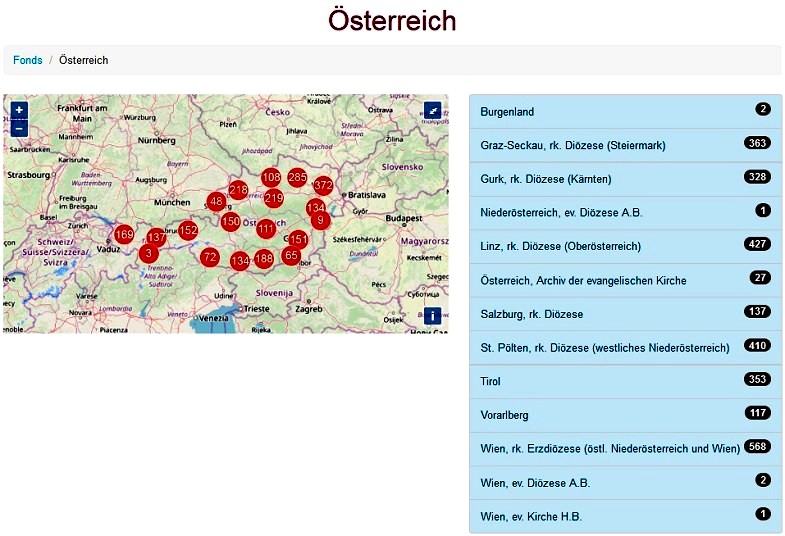
On the left is an interactive map, which, if you know where the parish you want is located in Austria, can be used to
zoom into that area by clicking the correct numbered red circles until the parish you want appears... but I'd
recommend against that! The numbers indicated the count of parishes each circle represents, so it may take many clicks to
get down to the scale where your parish appears... and one wrong click along the way can take you far from your intended
parish!
On the right is a much more user-friendly list... use that!
To start with, we will search out the original record for our first example above, a marriage that took place in the
Catholic parish of Simmering on 7 Jan 1901.
If you are not familiar with villages of Austria, you probably do not know where Simmering is located. One way to
find out is to type the village name into an online map program (my preference being Google Maps, so I'll use
it for this example... though other mapping websites will also work). Typing the village name Simmering into the
Google Maps search box causes "Simmering, Vienna, Austria" to be shown as a possibility. All the other
possibilities are things within this location, so it seems evident that Simmering is part of greater Vienna. Selecting that
possibility brings up some "Quick Facts" in GoogleMaps (lower left) that indicates Simmering is in District 11. You can also
go to this BB Newsletter article:
Newsletter236.htm#04, which will also tell you that Simmering is in District 11. With that knowledge, we will know where
to look in the blue list shown above.
The initial part of each line in the blue list is the name of a Diocese or Province in Austria. If a diocese,
the name will be followed by "rk." for Roman Catholic or "ev." for Lutheran. Lutheran
dioceses may be further qualified as A.B. (Augsburger Bekenntnis = Augsburg Confession = Evangelical
Lutheran) or H.B. (Helvetisches Bekenntnis = Swiss Confession = Calvinist / Reformed Lutheran).
Since Vienna is Wien in German, we can see that there is a likely entry in the blue list:
Wien, rk. Erzdiözese (östl. Niederösterreich und Wien)
This would be the Roman Catholic (Arch) Diocese of Vienna (the parenthetical phrase indicates it includes eastern
Lower Austria and Vienna). The number 568 in the black stretched-circle is the count of parishes in the archdiocese.
Clicking that line will lead to a list of all the parishes. While you could eyeball-search the column of parish names until
you find Simmering, it is probably quicker to let your browser's page search find it for you.
Doing so will find:
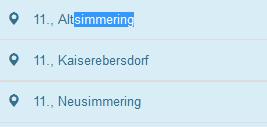
I purposely included three lines in the above clip because I want you to notice both the first and third entries shown.
Translated, they are Old Simmering and New Simmering. These are the only two "Simmering" found, so we
must want one of these two. In fact, a new, larger Simmering parish church was opened in 1910 and began keeping records in
1915, but the old church remains in use and its records are retained under its own name. As we want a 1901 record, the
Altsimmering collection is the one we need. However, we could not know this without clicking on each of these two
record collections. Doing so would quickly inform us that the available Altsimmering records cover the period 1682-1938,
while Neusimmering has available records only for 1915-1938.
Before I move on, I want to point out that number "11" that appears before each parish name in the clip above. It indicates
that these parishes are in the 11th District of Vienna. Keep that in mind if you have a district number listed in your
marginal entry, or if you already looked up the district. If the parish you found is not in that district, you probably
found the wrong place!

So, we are finally ready to look at the available records for Altsimmering. If you click on the link in the
blue list, you will get a page that starts off with a number of maps (one marking out the borders of the parish and a couple
of zoomable maps showing its location in Austria). Below that will be a verbal description of the parish borders and then a
limited history of the parish.
Then comes the list of church books (registers), in this case, titled: Registers (1682 - 1938) 129 total (29 shown)
and spread across three pages. Here is a clip from the first of those three pages:
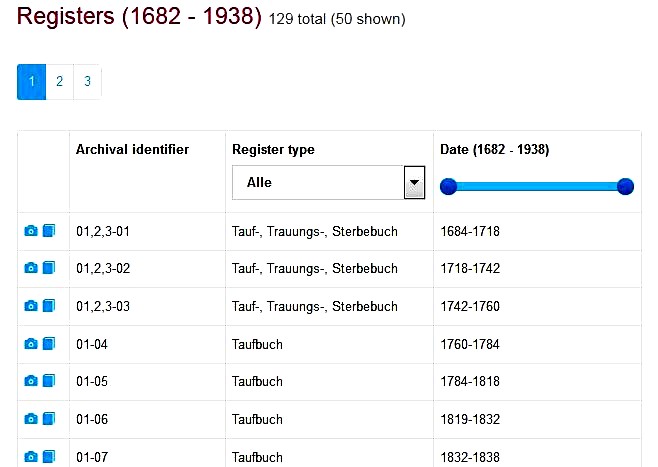
As the small print at the end of the title indicates, there are 129 different registers in the Altsimmering
collection, each register covering a particular time interval and a type of vital record, those being a
Tauf- (baptism), Trauungs- (marriage) and Sterbe- (death) buch (book). As you can see from the
first three registers in the list above, some books document multiple types of vital events. There usually also are index
books (Index Taufen, Index Trauungen, Index Tote [where Tote means dead]), and which for Altsimmering
are in the third page of it list. Jumping to that third page, we see this register:

Which would be the index we want for a 1901 marriage. I'll also note that the marriage book we will want is in the listing
on page 2:
 Having peeked ahead, I can tell you that there are 395 double-page images
in that marriage book (2 images of covers and 393 for records), so looking at it all can be a long process. For our example,
though, we know that the marriage occurred on January 7th of 1901, so it should not be terrible deep in the book and, per
the index above, is actually on the 7th "folio" page (where a folio is a left and right, open-book double-page).
However, I will note that the writing in this marriage book is quite difficult and I paged right past the correct record
when I initially manually searched for this record... only after I determined the correct page from the index did I realize
I had looked at it yet not seen it!
So, let us turn to index book and do this right. There are two icons on the left of the book entries (see above), the first,
a "camera" icon, will take you to the images; the second, a "book" icon, gives you some (mostly redundant or obvious)
information about this book:
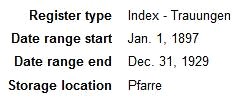
Given that, click the camera icon... and you'll get a page like this:
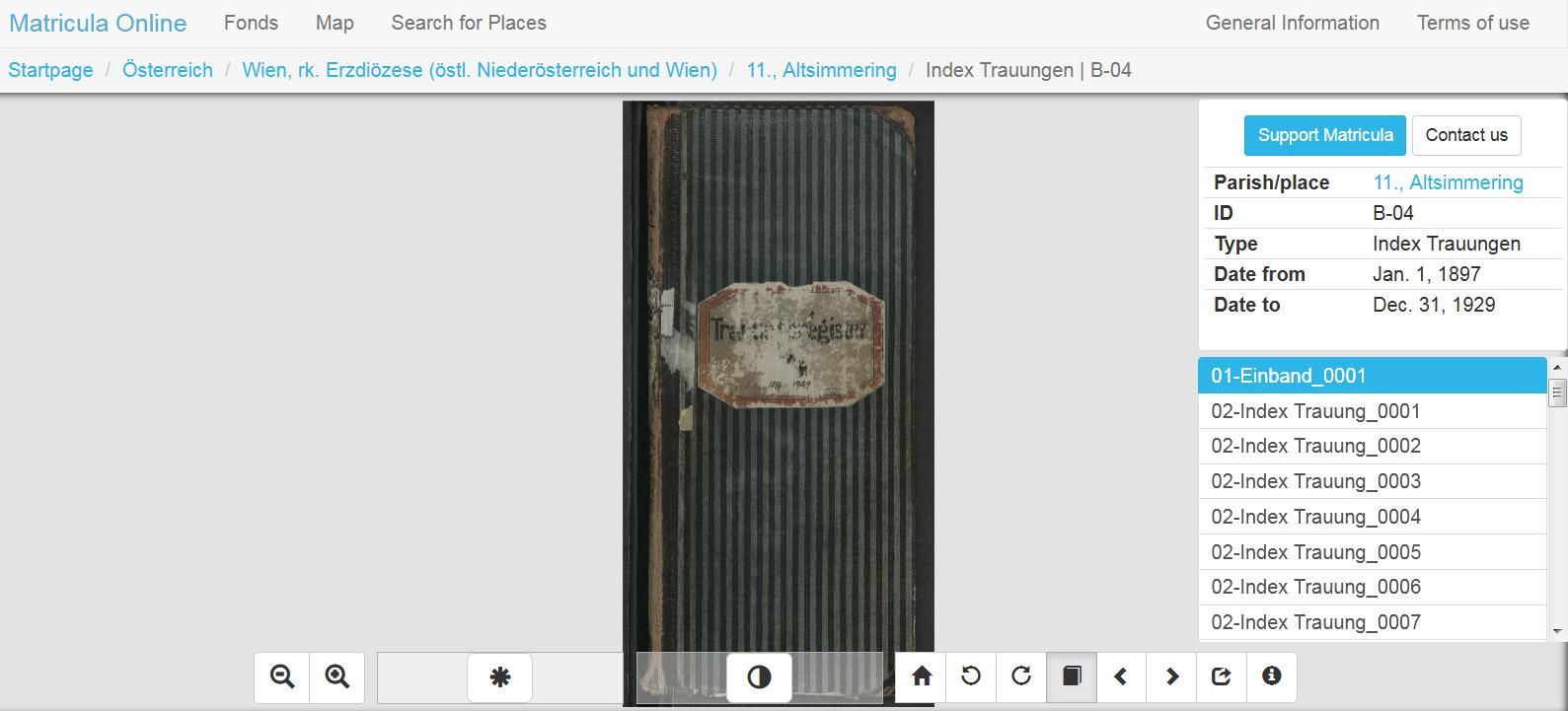
The main part of this page is an image of a book page, though initially it is usually an image of the book cover. Along the
bottom is a toolbar, with the first two tools on the left allowing you to zoom in or out. Beyond those, the next most useful
ones are the < and > icons, allowing you to page backward or forward. Along the right of the screen is a
description of the book you are in and then a scrollable list of the available images. The images in the list are simply
numbered so you will need to guess where in the list you want to go. Often, I scroll to the bottom to see how many images
there are (52 in this case), so I can better guess where in the list to look.
Depending on the parish, there may be a separate listing by bride's surname, but the most common format is by groom's
surname only. Each letter of the alphabet is presented sequentially, with years within each letter also presented
sequentially. Usually the order of entry within a letter-year section is the order of recording the events (marriages) in
that year. You will need to examine each index closely to discern the system if it fails to follow this typical format.
So, for our example marriage, we had the following information about the groom and bride from the marginal entry, as well as
knowing the year (1901) of marriage:
- Groom: Károly Pelczmann, born in Német Szent Grót, Roman Catholic religion, 34-year-old, single, unskilled
worker.
- Bride: Mária Gammer born Billovits - born in Bánya - Roman Catholic religion, 32-year-old, single, unskilled
worker-woman.
Thus we will be looking in the P's, specifically for year 1901. It is also reasonable to presume that the German form of the
groom's given name will be used, so Karl, not Károly. It is even possible that the P could be phonetically written as a B...
keep that in mind. With 52 pages in the index, I'll guess the P's are halfway through, so I'll roll down the list of page
images and click # 26. That proved to be the letter M (and a quick perusal confirmed that this index uses the expected,
common format. A few more clicks found the right page (32), and here is a clip from that page:

As you can see, Károly Pelczmann is the third entry in the 1901 P's, though his name is spelled Carl Pelzmann
(the German writer dropped the "Hungarian" c in the surname and my guess about Karl with a K was wrong [phonetics got me
there!], but at least it wasn't Károly!). The important part is the XIX at the top of the next column and the 7
in the last column. The XIX says marriage register 19 is where we should look and that 7 is the folio page we need in that
book.
If you recall a clip from above (repeated below), the code 02-19 says this is a marriage book (02) and it is number 19, so
that is consistent with what we had found in the index.

With this information in hand, we can confidently go to the right marriage book and directly to the 7th folio page:
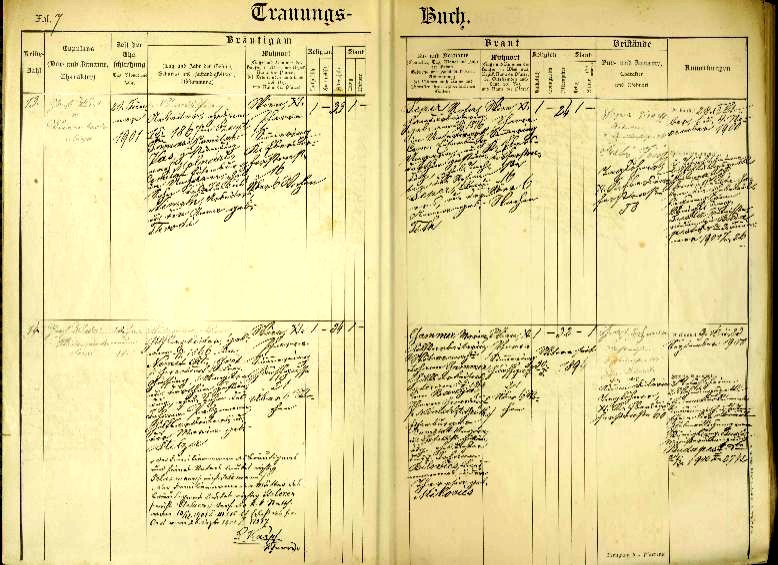
I'll talk a moment about the parts of this page...
First, only two marriages appear on the page; data for each goes from the left to the right margin (with the marriage we
want being the lower one).
Second, in the top left is "Fol. 7" so that matches with the data in the index.
Third, the columns, left to right are:
- Reihezahl = sequential number
- Copulans = the name of the officiant
- Zeit der Eheschließung = date of the wedding
- Bräutigam = groom
(with a whole group of sub-columns)
- Braut = bride
(also with a whole group of sub-columns)
- Beistände = witnesses
- Anmerkungen = notes
Since my purpose in this article is to talk about accessing these records (not how to read them), I'll stop without
discussing the details on the page. However, I will make a few comments and give you one zoomed-in clip from the page:
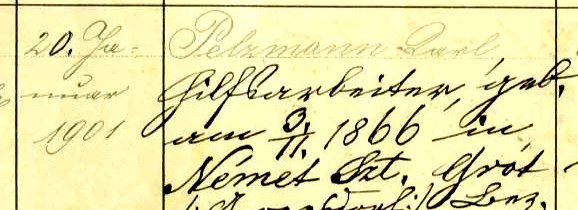
Here you can see that this record does refer to Carl Pelzmann (other parts of the record confirm the correct bride too).
What you may not notice immediately in this clip is that the date of the wedding is 20 January 1901, not the 7 January 1901
that the marginal entry stated (which may be why I missed it when paging through these records!). Further, from the page
image above you can see that there is a surprising amount of information about the bride and groom in the record (for
example, apparently Carl was born under the mother's name and later legitimized by the marriage of his parents), and even
additional information in the notes column. If you can get past the challenging writing, there is a treasure trove of data
here!

I'll now leave the above search effort and talk about the one example marginal record that did not provide the
parish where the event occurred. That was a Catholic birth for child János Schappelvein that
took place in "Zilingdorf" on 1 June 1896.
The immediate problem is that there is no place in Austria called Zilingdorf! However, there is one (and just one)
called Zillingdorf (two l's)... is this what they meant?
One clue may be in the location to where the marginal record was sent, that being Pecsenyéd = Pöttsching,
Burgenland. Mapping these two locations shows that they are but a few miles apart, though on opposite sides of the then
national border between Austria and Hungary (even today they are in different Austrian provinces so would not share a
recording district):
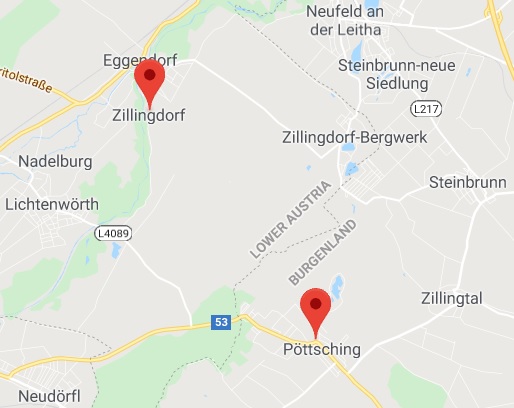
If we presume this is the correct village, we still need to know which parish recorded vital events for
Zillingdorf. I'll suggest two ways to do that...
First, we can see from the map above that Zillingdorf is in Lower Austria (Niederösterreich in German). If you
recall from the above search, the eastern part of Niederösterreich is in the Wien Erzdiözese. Even if you do
not recall that, you can go to web page
http://data.matricula-online.eu/en/oesterreich/, look at the blue list of Dioceses/Provinces and discover that fact
again. Having done so, click into that diocese and then search for Zillingdorf... you'll find it exists as a parish, so
problem solved.
A second approach requires you to be a (free) member of GenTeam. It has an online, searchable gazetteer of
Austria which, when searched for Zillingdorf, reports:

So we see that it is its own parish (and is in the Wien diocese).
With this information we can go to the parish and search out the birth record. If you do, you will see that there are no
dedicated index books available. However, if you open the correct Taufbuch and scroll to the bottom of the
image list, you will see that the last 21 images are an index to that specific register book. As we are looking for
János Schappelvein, index image 17 yields:

Thus we know that folio 27 is the correct image (though this was made more difficult because the original record
split the father's surname onto two lines and the writer of the index only noticed that problem after he had written
down the given name, forcing him to tack the rest of the surname above the given name). Jumping back to image/folio
page 27 indeed provides the original birth record.

As a final example, I'll spend a moment with the birth that occurred "Simmeringben Felső-utcza 6 szám,
alatt 1896 évi oktober hó 15 napján, Rudolf nevű törvényes fiú gyermek született" = "at Simmering, Oberstrasse 6, on
October 15th, 1896."
You may recall that I pointed out that Felső-utcza 6 seemed to be a translation into Hungarian of Oberstrasse 6,
but that address no longer exists (or did not ever exist) in Simmering. An obvious solution to resolving this confusion is
to consult the original record and see what address it gives (I'll leave searching out that record as an "exercise" for
you). If you do so, you will see that the child, Rudolf Schwarz, was born here:
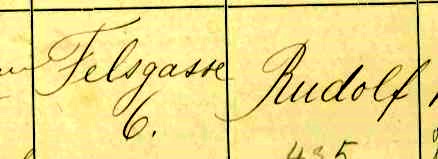
So, the original street was not Felső (which I already suspected) but it also was not Ober! Rather, we see
Rudolf was born at Felsgasse 6 = Rock Alley 6 (in English) or =
Szikla köz 6
(in Hungarian). In this case, the local recorder attempted to translate the street name (which he should not have
done, nor should you) and royally blew his attempt!
I hope this example makes the point that there is value in looking up the original record. However, I must
admit that I had not done so for this one until after BB member Christian Fuchs sent me a note after
reading my marginal birth entries article. I don't know if my random example was actually a family member for
Christian or if, instead, he was just curious given the issue I had pointed out about the street name. Regardless, he looked
it up and now we have the answer to this issue. Many thanks to Christian!

Some ending comments... as you can see, the actual process is not difficult but the typical "surrounding"
issues: spelling variations, multiple same-name places, difficult writing, etc. can complicate easy movement through those
steps. And once you reach the image you want, it can prove to be difficult to read. Further, there is no tool
provided by Matricula Online to capture the image; if you do wish to do so, you must use some form of screen
capture and reassemble the parts of the image in an image-editing program. However, there is a "direct link" icon,
 , on the bottom toolbar that will let you copy the page address so you can return
directly to the image. , on the bottom toolbar that will let you copy the page address so you can return
directly to the image.
Despite all this, there is often much to be gained by attempting the process, so I suggest you do so for your family
entries.
|
5) HISTORICAL BB NEWSLETTER ARTICLES
Editor: This is part of our series designed to recycle interesting articles from the BB Newsletters of 10 years
ago. However, this time I again jump back twenty years, to when Gerry wrote about origins, both of surnames and villages, in
the Burgenland region...

THE BURGENLAND BUNCH NEWS - No. 69
November 30, 1999
NIKITSCHER NAME, VILLAGE OF NIKITSCH AND BURGENLAND ORIGIN
- by Gerry Berghold
Often family names indicate place of origin. It doesn't take much imagination to connect Frankfurter with Frankfurt, Bremer
to Bremen, Sorger to Sorg, etc. Likewise, some families gave their names to places, which others assumed as their name.
There can be a lot of migration following the assumption of a family name, and finding links to the place of origin
indicated by the name may be difficult if not impossible. I recently had a question which illustrates this.
Question: My name is Fred Nikithser and I am interested in tracing ancestral information for my family
name, which also may be spelled Nikitscher. My folks came from the area of Southern Burgenland. These are the names
of villages I can remember when hearing my parents talk with other immigrants: Punitz, Güssing, Tobaj, Tschantschendorf and
Moschendorf.
My dad came to the US as a teenager prior to 1920. I don't know when my mom arrived. My mom's maiden name was Marakovits, I
have a map of Austria and it shows a city or village along the Hungarian border in middle Burgenland named Nikitsch. It's a
long shot but perhaps there is a connection to my dad's and grandfather's origin. Dad settled in Northampton, PA.
Answer: Hello Fred, thanks for the contact. Sometimes I get an interesting query that I haven't researched
before. So it is with the village of Nikitsch in the Bezirk (district) of Oberpullendorf. First, let's explain your name:
Nikithser is a phonetic spelling of Nikitscher, which is how it is spelled in Austria and the Lehigh Valley of PA
(which includes your Northampton - many Burgenland immigrants). It probably means "someone from Nikitsch" and there
are a fair number of families by that name in southern Burgenland, although none are found in Nikitsch today. There are
seven Nikitscher families in Güssing, which is the Bezirk (district) for the villages which you mention and which
area sent many immigrants to the Northampton area. There is also one family in Tobaj.
I knew of one family in Allentown, PA. One of their sons was known to me, and my grandmother (Sorger) said his family were
from my grandfather's village of Rosenberg, today part of Güssing.
From all of this, I'd deduce your Nikitscher ancestor came from Güssing or close by, so I'd check the Güssing church records
first. Available from any LDS (Mormon) family history center.
NIKITSCH
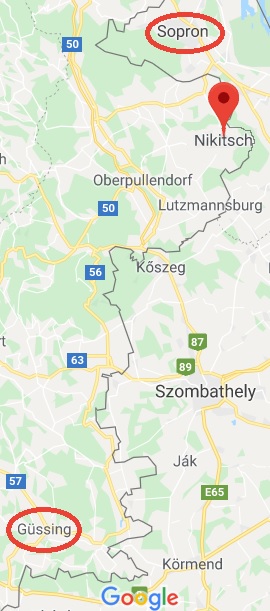 Now,
what about the village of Nikitsch? It is in a region settled since the stone age. It lies along the Nikitschbach
(stream) between the Kreutzerwald and the Nikitscherwald (wald means forest). Its name in 1153 was
Philes, Ukac in 1204, Ikech in 1311, Yketsch in 1437 and Ikitsch in 1522. You can see how
the name developed. The Hungarian name is Füles or Filez and the Croatian name is Opcina Filez.
The Croatians came here about 1524 as refugees from the Turkish invasions. Now,
what about the village of Nikitsch? It is in a region settled since the stone age. It lies along the Nikitschbach
(stream) between the Kreutzerwald and the Nikitscherwald (wald means forest). Its name in 1153 was
Philes, Ukac in 1204, Ikech in 1311, Yketsch in 1437 and Ikitsch in 1522. You can see how
the name developed. The Hungarian name is Füles or Filez and the Croatian name is Opcina Filez.
The Croatians came here about 1524 as refugees from the Turkish invasions.
Marakovits is a Croatian name, where -its means descendant of. You might want to read the history of
Croat settlement in Burgenland, which is in our archives. Burgenland is 83% German, 14% Croat and 3% Hungarian. Today,
Nikitsch includes the administration of the nearby villages of Kroatisch Geresdorf and Kroatisch Minihof.
In the 13th century, it belonged to the Counts of Güssing, later the master of Lockenhaus (castle), then the Kanizsy family.
It was destroyed in 1536 by the Turks and, I'd guess, that is the period in which your ancestors may have fled south to the
Güssing area for protection (Turks came through the area from Sopron, Hungary on their way to the first siege of Vienna).
Rebuilt more than once due to depopulation through war and plague. There is a "Schloss (palace) Nikitsch,"
which stems from Kastell Galsohaza in the possession of the Zichy-Mesko family since 1903. Nothing to do with
Nikitsch family.
You have an interesting name but your ancestors will be found in Güssing, I'm sure. In the book "Stadterhebung
Güssing-1973," I find that one Hans Nikitscher lived in Rosenberg in 1750. You can find out more about Rosenberg
and Güssing by reviewing our newsletter archives.
|
6) ETHNIC EVENTS
WORLDWIDE
Sunday, Dec 1, 1:30 - 3 PM (ET): In Concert: Christmas in Vienna 2016, on EWTN [Eternal Word
Television Network], (see www.ewtn.com/tv/channel-finder for local
channel number). Celebrate Christ's birth with a rebroadcast of a special concert of international music by the Vienna
Symphonic Orchestra, Singing Academy, and world-famous Vienna Boys Choir performing Christmas songs from
around the world.
LEHIGH VALLEY, PA
Friday, Nov 22 - Sunday, Dec 22 (weekends): Christkindlmarkt in Bethlehem. Info:
www.christmascity.org/christkindlmarkt
Friday, Nov 22 - Sunday, Dec 22 (weekends): Weihnachtsmarkt in Bethlehem. Info:
www.discoverlehighvalley.com/listing/christmas-huts-on-main/3718/
Sunday, December 1: Christkindlmarkt at the Reading Liederkranz. Info:
www.readingliederkranz.com
Sunday, December 1: Sunday Dance at the Coplay Sängerbund. Music by Maria & John. Info:
www.coplaysaengerbund.com
Tuesday, December 3: German-English Advent Singstunde at Central Moravian Church in Bethlehem. Info:
www.centralmoravianchurch.org/event/advent-singstunde/
Sunday, December 8: Sunday Dance at the Coplay Sängerbund. Music by The Jolly Bavarians. Info:
www.coplaysaengerbund.com
Sunday, December 8: Christkindlmarkt at the Lancaster Liederkranz. Info:
www.lancasterliederkranz.com
Friday, December 13: Holiday Heimatabend with the Auerhahn Schuhplattlers at the Evergreen
Heimatbund in Fleetwood. Info: www.evergreenclub.org
Saturday, December 14: Lancaster Liederkranz Chorus Christmas Concert at Zion Evangelical Lutheran Church
in Landisville. Info: www.lancasterliederkranz.com
Sunday, December 15: Sunday Dance at the Coplay Sängerbund. Music by The Polkateers. Info:
www.coplaysaengerbund.com
Sunday, December 15: German Christmas Service with the Reading Liederkranz Singers at St. Johns
Lutheran Church in Reading (with live broadcast on WEEU 830AM). Info:
www.readingliederkranz.com
Sunday, December 22: Christmas Dance at the Coplay Sängerbund. Music by The Josef Kroboth Orchestra.
Info: www.coplaysaengerbund.com
Tuesday, December 31: Silvesterfeier (New Years Celebration) at the Coplay Sängerbund. Music by The
Emil Schanta Band. Info: www.coplaysaengerbund.com
Wednesday, January 1: Pork & Sauerkraut Dinner at the Reading Liederkranz. Accordion music by Don
Bitterlich. Info: www.readingliederkranz.com
Sunday, January 5: German Christmas Service at St. Johns Lutheran Church in Emmaus. Info:
www.stjohnsemmaus.org/index.php/?post_type=post&p=3970
NEW BRITAIN, CT
Friday, Dec 6, 7 pm: Heimat Abend. Austrian Donau Club, 545 Arch Street, $3. Music by Frank
Billowitz.
Friday, Dec 20, 7:30 pm: Heurigan Abend. Austrian Donau Club, 545 Arch Street, $3. Music by
Schachtelgebirger Musikanten.
ST. LOUIS, MO
(none)
UPPER MIDWEST
(none)
|
7) BURGENLAND EMIGRANT OBITUARIES
Cecilia Cline (née Knautz)
 Cecilia R. Cline, 95, of Tampa,
Florida, passed away peacefully in her home surrounded by family, November 6, 2019. Cecilia R. Cline, 95, of Tampa,
Florida, passed away peacefully in her home surrounded by family, November 6, 2019.
Born June 27, 1924 in Rábafüzes (Raabfidisch), Hungary, she was a daughter of the late Johann and Cecilia Knautz.
Her family immigrated to Toronto, Canada, in 1929, where she lived until she married her husband of 60 years, Joseph
(pre-deceased in 2009), and in 1948 moved to Chicago, IL. They retired to Clearwater, FL, in 1985.
She is survived by her sister, Stella (Gino); and predeceased by sister, Ella. Also survived by, son, Thomas (Sandi) of
Chicago, IL and their seven children, Benjamin, Andrew, Cecilia, Zachary, Alexander, Katharine and Jonathan; and
great-grandchildren, Savannah, William and Cashel; daughter, Cynthia (Cindy) (Bob) Krueger of Tampa and their children, Bob
II (Aubrey), Melissa (Court) and Dawn; and great-grand-children, Tyler, Dylan, Trey III, Riley, Drew and baby Grant (to be).
The family would like to thank Teresa J. and Rita B. for their loving and tender care over the years. A Memorial
Mass/celebration will be held on Saturday, January 4, 2020 at 11 am at Christ the King Catholic Church in Tampa, FL. Family
will receive friends beginning at 10 am. in the church. A luncheon will follow in the Mary Martha Center next to the church.
In lieu of flowers, donations can be made to Renew Haiti, A Ministry of Christ the King Catholic Church.
Published in the Tampa Bay Times on Nov. 10, 2019
|
END OF NEWSLETTER (Even good things must end!)
|
|
NOTICE (Informal Terms and Conditions): The Burgenland Bunch (BB) was formed and exists to assist Burgenland
descendants in their research into their heritage and, toward that end, reserves the right to use any communication you have
with us (email, letter, phone conversation, data upload, etc.) as part of our information exchange and educational research
efforts.
● If you do not want your communication to be used for this purpose, indicate that it is "confidential"
and we will attempt to abide by that request.
● Correspondents who communicate with the BB without requesting confidentiality retain their copyright
but give a non-exclusive license to the BB allowing us to forward to BB members, publish in our monthly newsletter or on our
website, and/or subsequently and permanently archive all or parts of such communications.
The formal Burgenland Bunch Website Usage Agreement can be found here: Agreement
The Burgenland Bunch homepage (website) can be found at: the-burgenland-bunch.org
Burgenland Bunch Newsletter, copyright Š 2019 by The Burgenland Bunch
All rights reserved. Permission to copy excerpts granted if credit is provided. |
 This
month's collection of bits and pieces in Article 1 begins with the continuing lack of
information concerning the Eisenstadt Diocese vital records (though it does sort of explain why!) and follows that with a
request that the Burgenland DNA Project participants allow appropriate administrative access to their
data; the third bit actually provides data: a Tadten houselist, compliments of Hannes Graf! Our fourth bit, an
information-filled report on the first-ever meeting of the Lehigh Valley / East Coast Burgenland Bunch, is a
pleasure to provide to you, as I'm pleased to welcome the group to the BB-affiliated family! I don't quite know how to
describe the fifth bit... I write a lot and throw out lots of numbers but... well, you decide if it says anything! We close
Article 1 with our regular tidbit features, the monthly BB Facebook report, book sales, a recipe and a cartoon.
This
month's collection of bits and pieces in Article 1 begins with the continuing lack of
information concerning the Eisenstadt Diocese vital records (though it does sort of explain why!) and follows that with a
request that the Burgenland DNA Project participants allow appropriate administrative access to their
data; the third bit actually provides data: a Tadten houselist, compliments of Hannes Graf! Our fourth bit, an
information-filled report on the first-ever meeting of the Lehigh Valley / East Coast Burgenland Bunch, is a
pleasure to provide to you, as I'm pleased to welcome the group to the BB-affiliated family! I don't quite know how to
describe the fifth bit... I write a lot and throw out lots of numbers but... well, you decide if it says anything! We close
Article 1 with our regular tidbit features, the monthly BB Facebook report, book sales, a recipe and a cartoon. Online
Burgenland Catholic Church Books: Not much has changed again concerning the pending availability of the Matriken
(register books) of the Catholic Diocese of Eisenstadt. After I reported essentially that last month, Patrick Kovacs
shared an exchange he had with Adam Vajk, Director, and Robert Oláh,
Archivist, for Publications at Egyházmegyei Levéltár Győr (the Győr Diocesan Archives).
Mr. Oláh stated that the first Eisenstadt records are predicted to upload in
December. Mr. Vajk wrote further that the "E-service of the Diocesan
Collection of Eisenstadt will [not]
launch untill the end of this year. However, not all of the parish registers
will be online at once, as some of them are still at the parishes. Moreover, the digitisation of the rest available in the
repositories in Eisenstadt is not finished yet, thus volumes will be uploaded next year." He then pointed Patrick to the
website I had found earlier (which was locked down "in maintenance
mode" in the "http:" form
but apparently open in the secure "https:" form) as a source for further messages. The referenced site, however, had
information for a different diocese (apparently intended as a model for the future Eisenstadt site). However, in
recent checks, even the "https:" version is now locked down "in
maintenance mode." Thus no further information is available as I write this.
Online
Burgenland Catholic Church Books: Not much has changed again concerning the pending availability of the Matriken
(register books) of the Catholic Diocese of Eisenstadt. After I reported essentially that last month, Patrick Kovacs
shared an exchange he had with Adam Vajk, Director, and Robert Oláh,
Archivist, for Publications at Egyházmegyei Levéltár Győr (the Győr Diocesan Archives).
Mr. Oláh stated that the first Eisenstadt records are predicted to upload in
December. Mr. Vajk wrote further that the "E-service of the Diocesan
Collection of Eisenstadt will [not]
launch untill the end of this year. However, not all of the parish registers
will be online at once, as some of them are still at the parishes. Moreover, the digitisation of the rest available in the
repositories in Eisenstadt is not finished yet, thus volumes will be uploaded next year." He then pointed Patrick to the
website I had found earlier (which was locked down "in maintenance
mode" in the "http:" form
but apparently open in the secure "https:" form) as a source for further messages. The referenced site, however, had
information for a different diocese (apparently intended as a model for the future Eisenstadt site). However, in
recent checks, even the "https:" version is now locked down "in
maintenance mode." Thus no further information is available as I write this. Tadten House Number
Translation List: I'm pleased to announce that we added a new house-number translation list, this time for Tadten.
Tadten House Number
Translation List: I'm pleased to announce that we added a new house-number translation list, this time for Tadten.
 This
list was also interesting in that our Tadten Houselist (based on 1856 land-register data) gives a slightly
different listing of owners, as well as skips three house numbers. In many cases (72 of 145 houses), the owner is exactly
the same. Many others are obvious spelling variations of the same surname (43) or are the same exact surname but a different
given name (22, most are probably spouses or children). Only five houses showed clearly-different owner names, but I'd
assume some of those were son-in-law inheritances. It is not clear why three houses did not appear in the land-register
houselist; one possibility is that the property was deserted or inactive in 1856 and was returned to active use in 1857.
Regardless, we have added text to the 1856 house listing to provide this new data.
This
list was also interesting in that our Tadten Houselist (based on 1856 land-register data) gives a slightly
different listing of owners, as well as skips three house numbers. In many cases (72 of 145 houses), the owner is exactly
the same. Many others are obvious spelling variations of the same surname (43) or are the same exact surname but a different
given name (22, most are probably spouses or children). Only five houses showed clearly-different owner names, but I'd
assume some of those were son-in-law inheritances. It is not clear why three houses did not appear in the land-register
houselist; one possibility is that the property was deserted or inactive in 1856 and was returned to active use in 1857.
Regardless, we have added text to the 1856 house listing to provide this new data. A Number for
Thought: I ran across a number that forced me to think hard for a change, so I also thought I'd share that pain
with you!
A Number for
Thought: I ran across a number that forced me to think hard for a change, so I also thought I'd share that pain
with you!




 Now,
what about the village of Nikitsch? It is in a region settled since the stone age. It lies along the Nikitschbach
(stream) between the Kreutzerwald and the Nikitscherwald (wald means forest). Its name in 1153 was
Philes, Ukac in 1204, Ikech in 1311, Yketsch in 1437 and Ikitsch in 1522. You can see how
the name developed. The Hungarian name is Füles or Filez and the Croatian name is Opcina Filez.
The Croatians came here about 1524 as refugees from the Turkish invasions.
Now,
what about the village of Nikitsch? It is in a region settled since the stone age. It lies along the Nikitschbach
(stream) between the Kreutzerwald and the Nikitscherwald (wald means forest). Its name in 1153 was
Philes, Ukac in 1204, Ikech in 1311, Yketsch in 1437 and Ikitsch in 1522. You can see how
the name developed. The Hungarian name is Füles or Filez and the Croatian name is Opcina Filez.
The Croatians came here about 1524 as refugees from the Turkish invasions. Cecilia R. Cline, 95, of Tampa,
Florida, passed away peacefully in her home surrounded by family, November 6, 2019.
Cecilia R. Cline, 95, of Tampa,
Florida, passed away peacefully in her home surrounded by family, November 6, 2019. News
News

 The
Facebook Bunch (from Vanessa Sandhu):
The
Facebook Bunch (from Vanessa Sandhu):  Update
for book "The Burgenländer Emigration to America": Here is this month's update on purchases of the English issue of
the 3rd edition of Dr. Walter Dujmovits' book "Die Amerika-Wanderung Der Burgenländer."
Update
for book "The Burgenländer Emigration to America": Here is this month's update on purchases of the English issue of
the 3rd edition of Dr. Walter Dujmovits' book "Die Amerika-Wanderung Der Burgenländer." Apple
Dumplings
Apple
Dumplings










